- Two Powerful Ways to Enhance Cutting Rooting Ability Naturally
- Introduction
- 1. Willow Water
- 2. Honey Solution
- Conclusion
- Organic Rooting Hormones
- Natural Ingredients for Organic Rooting Hormones
- Application of Organic Rooting Hormones
- Benefits of Organic Rooting Hormones
- Beneficial Microorganisms in Soil
- Types of Beneficial Microorganisms
- Benefits of Beneficial Microorganisms
- Promoting Beneficial Microorganisms
- Conclusion
- Proper Cutting Selection and Preparation
- 1. Choose healthy and vigorous plants
- 2. Select the right time to take cuttings
- 3. Use clean and sharp tools
- 4. Take cuttings from the right part of the plant
- 5. Remove excess leaves and flowers
- 6. Use a rooting hormone (optional)
- 7. Prepare a suitable rooting medium
- 8. Make clean and slanting cuts
- Suitable Growing Medium
- Adequate Humidity and Moisture
- Optimal Temperature and Light Conditions
- Temperature
- Light
- Conclusion
- Regular Nutrient Supply
- Careful Handling and Protection
- 1. Select Healthy Cuttings
- 2. Use Clean, Sharp Tools
- 3. Apply Rooting Hormone, If Desired
- 4. Provide Proper Environmental Conditions
- 5. Keep Cuttings Moist
- 6. Protect the Cuttings
- Question-answer:
- Can you explain what rooting ability is?
- Are there any natural remedies that can boost the rooting ability of cuttings?
- What are the two natural remedies mentioned in the article?
- How does willow water improve the rooting ability of cuttings?
- Is honey effective in boosting the rooting ability of cuttings?
- Are there any other natural alternatives to boost rooting ability?
- Can these natural remedies be used for all types of plants?
- Video: Secret Plant Cuttings Propagation Tips No One Will Tell You!
Rooting cuttings is a popular way to propagate plants, but it can sometimes be a challenging process. While there are many chemical products available on the market to help boost the rooting ability of cuttings, there are also natural remedies that can be just as effective, without the use of chemicals.
One natural remedy that has been used for centuries is the use of honey. Honey contains natural enzymes and hormones that can stimulate root growth. To use honey as a rooting aid, simply dip the bottom of the cutting in honey before planting it in soil or a rooting medium. This can help provide the cutting with the necessary nutrients and encourage roots to form.
Another natural remedy to boost the rooting ability of cuttings is the use of willow water. Willow water is made by steeping willow branches or leaves in water and letting it sit for a period of time. The resulting liquid contains a natural hormone called indolebutyric acid (IBA) that can promote root growth. To use willow water, soak the bottom of the cutting in the liquid for a few hours before planting it. This can help improve the chances of successful rooting.
If you’re looking for a chemical-free way to boost the rooting ability of your cuttings, give honey and willow water a try. These natural remedies have been used for generations and can be just as effective as chemical products. Whether you choose to use honey or willow water, remember to provide your cuttings with the proper care and attention they need to thrive.
By using these natural remedies, you can help increase the success rate of rooting cuttings without relying on chemicals. Give them a try and see the difference they can make in your propagation efforts!
Two Powerful Ways to Enhance Cutting Rooting Ability Naturally
Introduction
Rooting cuttings is a common method used by gardeners and horticulturists to propagate plants. While there are many synthetic rooting hormones available on the market, there are also natural remedies that can be used to boost rooting ability without the use of chemicals. In this article, we will explore two powerful ways to enhance cutting rooting ability naturally.
1. Willow Water
Willow water is a natural rooting hormone that can be easily made at home. This method has been used for centuries and is known for its effectiveness in helping cuttings root quickly. Here’s how to prepare willow water:
- Collect a handful of fresh willow branches.
- Remove the leaves and cut the branches into small pieces.
- Place the willow branches in a jar and cover them with water.
- Let the mixture sit for 24-48 hours.
After the allotted time, you can use the willow water to water your cuttings or soak the cuttings in the solution for a few hours before planting them in soil. The natural rooting hormones present in the willow water will help stimulate root growth and increase the chances of successful propagation.
2. Honey Solution
Honey is another natural remedy that can be used to enhance cutting rooting ability. Honey is known for its antiseptic and anti-fungal properties, which can help prevent infections and promote healthy root formation. Here’s how to use honey to boost rooting ability:
- Mix one tablespoon of raw honey with two cups of warm water.
- Stir the mixture until the honey is completely dissolved.
- Dip the cut end of the plant cutting into the honey solution.
- Plant the cutting in a pot with suitable growing medium.
The honey solution will act as a natural rooting hormone and provide the necessary nutrients for the cutting to develop roots. It is important to note that using too much honey can be detrimental to the cutting, so it is best to use the solution sparingly.
Conclusion
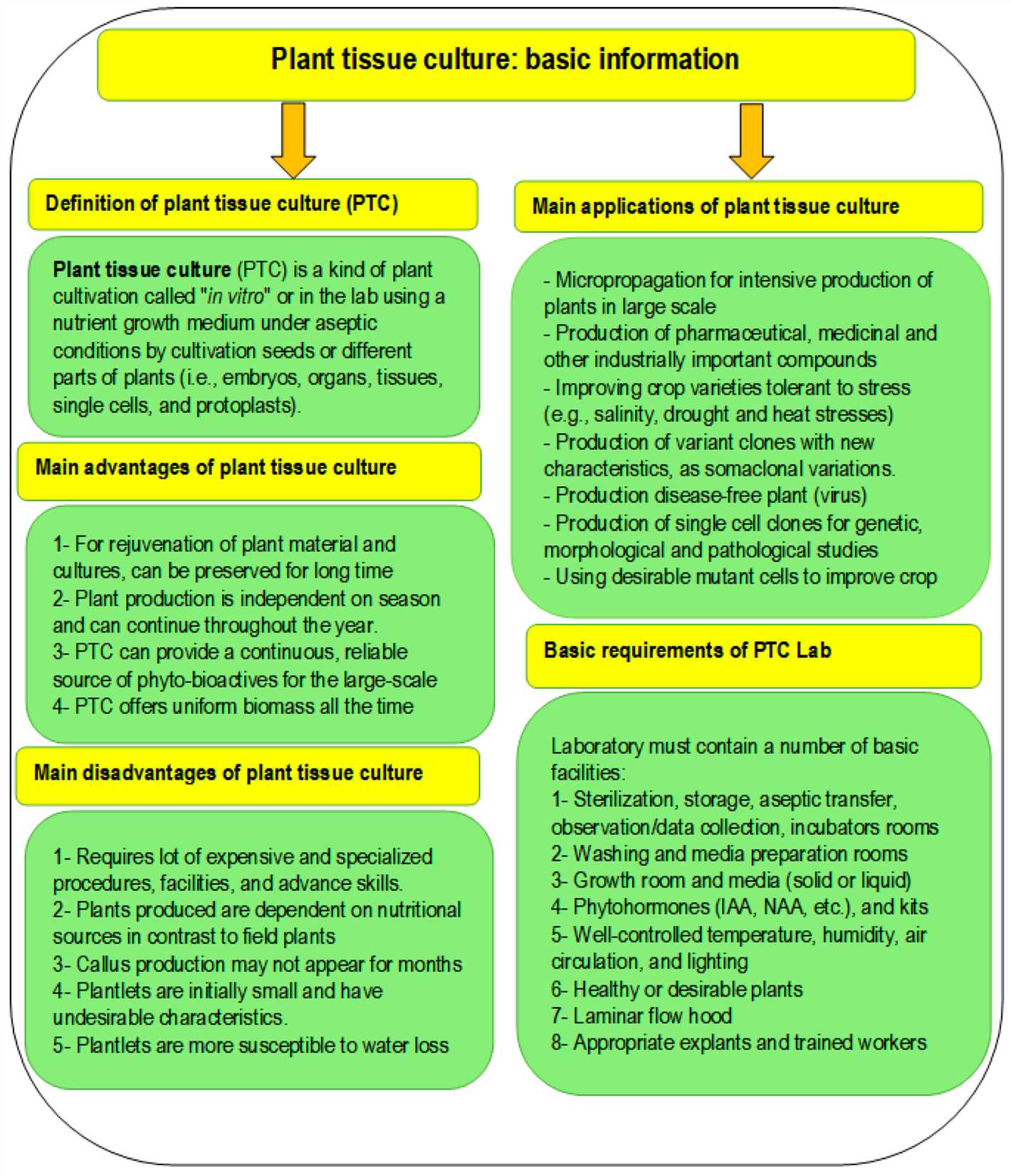
Enhancing cutting rooting ability naturally is a great way to propagate plants without the use of synthetic chemicals. Willow water and honey solution are two powerful remedies that can help stimulate root growth and increase the success rates of propagating cuttings. Give these natural methods a try and enjoy the satisfaction of growing new plants from cuttings.
Organic Rooting Hormones
Rooting hormones are substances that help promote root growth in cuttings. While many commercial rooting hormones contain synthetic chemicals, there are also organic alternatives available that are just as effective. These organic rooting hormones can be made from various natural ingredients, such as plant extracts and other organic compounds, that stimulate root formation.
Natural Ingredients for Organic Rooting Hormones
There are several natural ingredients that can be used to make organic rooting hormones. Some of the most common ones include:
- Willow Tree: Willow tree extracts contain a natural hormone known as indolebutyric acid (IBA), which promotes root growth. To make an organic rooting hormone from willow, simply soak willow twigs in water for a few days and then use the infused water as a rooting hormone solution.
- Honey: Honey has natural antimicrobial properties and contains enzymes that stimulate root growth. To use honey as a rooting hormone, dilute it in water and dip the cuttings in the solution before planting.
- Aloe Vera: Aloe vera gel is known for its soothing and healing properties, but it can also stimulate root growth. To create an organic rooting hormone with aloe vera, mix the gel with water and use it to soak the cuttings.
- Cinnamon: Cinnamon has natural fungicidal properties and can help prevent fungal diseases in cuttings. To use cinnamon as a rooting hormone, dust the cut ends of the cuttings with powdered cinnamon before planting.
Application of Organic Rooting Hormones
To apply organic rooting hormones to cuttings, follow these steps:
- Prepare the rooting hormone solution by diluting the natural ingredient in water according to the instructions.
- Cut the plant material for propagation, making sure each cutting has at least one node (the place where new roots will form).
- Dip the cut end of each cutting into the rooting hormone solution, ensuring it is fully coated.
- Plant the cuttings in a suitable rooting medium, such as a mix of potting soil and perlite.
- Keep the cuttings in a warm and humid environment, making sure to water them regularly.
- Monitor the progress of the cuttings and wait for roots to develop before transplanting them into individual pots or the desired location.
Benefits of Organic Rooting Hormones
Using organic rooting hormones has several benefits:
- Environmentally friendly: Organic rooting hormones are made from natural ingredients and do not contain synthetic chemicals, making them safe for the environment.
- Healthier plants: Organic rooting hormones promote natural root growth, resulting in healthier and stronger plants.
- Cost-effective: Natural ingredients for organic rooting hormones can often be found at home or easily purchased, making them a cost-effective alternative to commercial rooting hormones.
- Easy to make and use: Organic rooting hormone solutions can be easily prepared at home and applied to cuttings with minimal effort.
Overall, organic rooting hormones provide a natural and effective way to boost the rooting ability of cuttings without relying on synthetic chemicals. By using natural ingredients, gardeners can nurture strong and healthy plants while minimizing their environmental impact.
Beneficial Microorganisms in Soil
Soil is teeming with microorganisms, many of which play a crucial role in plant growth and health. These beneficial microorganisms contribute to the overall fertility and structure of the soil, as well as help plants to absorb nutrients and fight off diseases. Understanding the importance of these microorganisms can help gardeners and farmers promote healthier plants and increase crop yields.
Types of Beneficial Microorganisms
There are several types of beneficial microorganisms commonly found in soil:
- Bacteria: Certain bacteria, such as rhizobia, form symbiotic relationships with legume plants, fixing nitrogen from the atmosphere and making it available to the plants. Other bacteria can suppress plant diseases by producing antibiotics or competing with harmful pathogens.
- Fungi: Mycorrhizal fungi create symbiotic partnerships with plant roots, forming a network that helps plants absorb more nutrients and water from the soil. These fungi also help to break down organic matter, releasing nutrients for plant uptake.
- Protozoa: Protozoa feed on bacteria and other microorganisms in the soil, helping to regulate their populations. They can also enhance nutrient cycling by releasing nutrients in a plant-available form.
- Nematodes: Certain nematodes, known as predatory nematodes, feed on pest insects and can help control populations of harmful pests in the soil. Other nematodes, called bacterivorous nematodes, feed on bacteria and can help regulate their populations in the soil.
Benefits of Beneficial Microorganisms
The presence of these beneficial microorganisms in soil provides numerous benefits:
- Improved Nutrient Availability: Beneficial microorganisms help break down organic matter and release nutrients in forms that are readily available for plant uptake. They also help solubilize nutrients from the soil, making them more accessible to plants.
- Enhanced Disease Resistance: Some microorganisms produce compounds that inhibit the growth of harmful pathogens, protecting plants from diseases. They can also compete with pathogens for nutrients and space in the soil, limiting their ability to establish and infect plants.
- Increased Water Retention: Mycorrhizal fungi form a network of hyphae that can extend the reach of plant roots, improving water absorption and reducing water stress in plants.
- Improved Soil Structure: Beneficial microorganisms help to create and maintain soil aggregates, which improve soil structure and drainage. This allows for better air and water movement in the soil, promoting root growth and preventing waterlogging.
- Reduced Environmental Impact: By promoting healthier plants and increasing nutrient uptake efficiency, beneficial microorganisms can help reduce the need for synthetic fertilizers and pesticides, decreasing the ecological footprint of farming and gardening practices.
Promoting Beneficial Microorganisms
To encourage the growth and activity of beneficial microorganisms in soil, gardeners and farmers can take several steps:
- Use organic matter: Adding compost, manure, or other organic amendments to the soil can provide a food source for microorganisms and promote their growth.
- Avoid chemical pesticides and fertilizers: Synthetic chemicals can harm beneficial microorganisms in the soil. Instead, opt for natural pest control methods and organic fertilizers.
- Maintain good soil moisture: Beneficial microorganisms thrive in moist soil conditions. Avoid overwatering or allowing the soil to become too dry.
- Diversify plantings: Planting a variety of different crops, cover crops, and companion plants can help create a diverse and balanced soil ecosystem, supporting a wide range of beneficial microorganisms.
- Minimize soil disturbance: Excessive tilling or digging can disrupt the delicate balance of microorganisms in the soil. Practice minimal tillage techniques to preserve the structure and microbial activity in the soil.
Conclusion
Beneficial microorganisms in soil play a vital role in supporting plant growth and health. By understanding the types of microorganisms present in the soil and taking steps to promote their growth and activity, gardeners and farmers can create a healthy and fertile environment for plants to thrive.
Proper Cutting Selection and Preparation
Rooting ability of cuttings greatly depends on the selection and preparation of the plant material. Here are some key factors to consider:
1. Choose healthy and vigorous plants
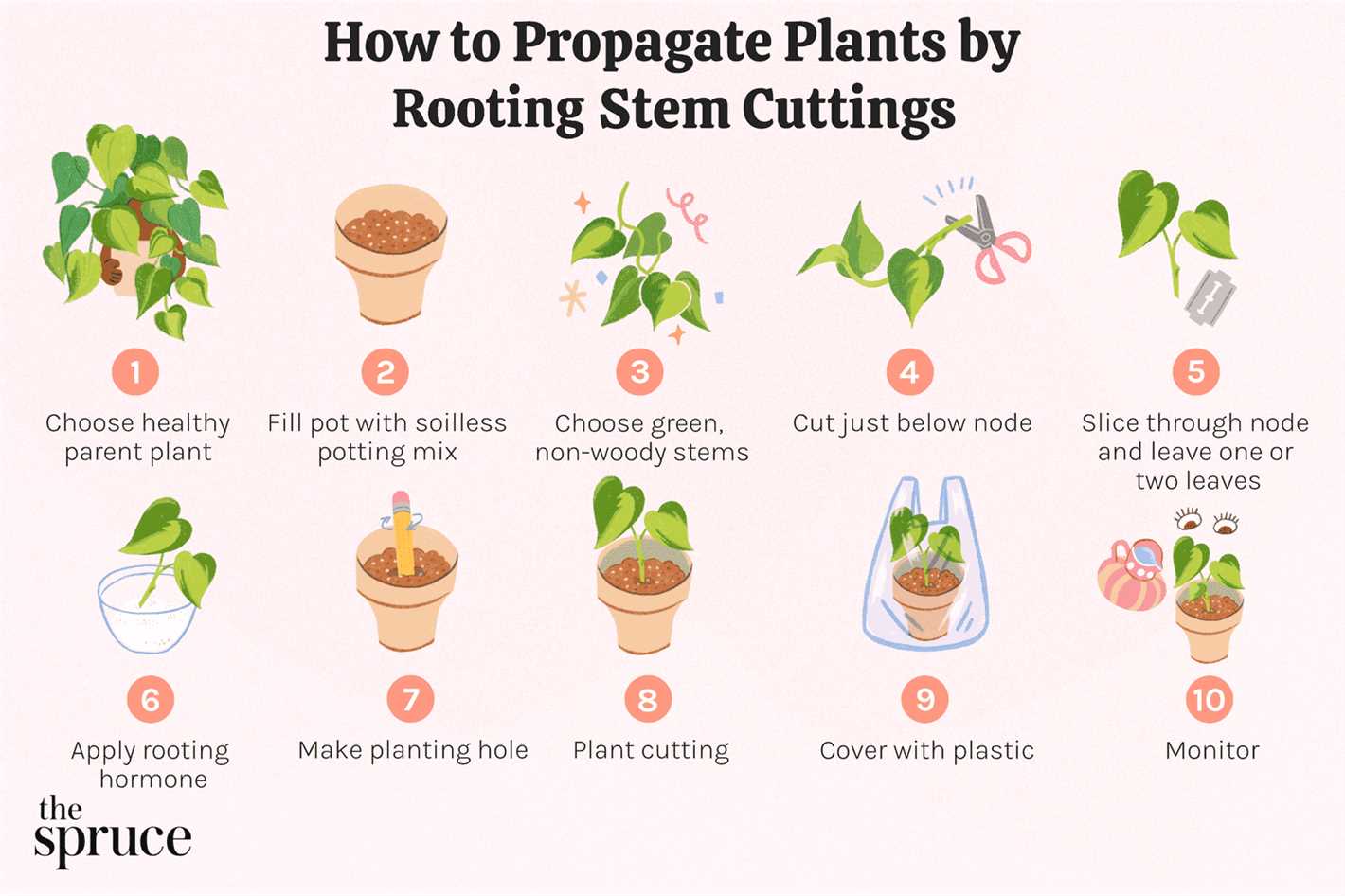
Select cuttings from plants that are free from diseases, pests, and nutrient deficiencies. Look for vibrant, green foliage and sturdy stems. Avoid using weak or damaged plants as they may have a harder time developing roots.
2. Select the right time to take cuttings
The optimal timing for taking cuttings depends on the specific plant species. Generally, the best time is during the plant’s active growth period, typically spring or early summer. Avoid taking cuttings during periods of stress or dormancy.
3. Use clean and sharp tools
Ensure that your cutting tools, such as a pruner or knife, are clean and sharp. Clean tools prevent the spread of diseases and sharp tools make clean cuts, promoting faster healing and root development.
4. Take cuttings from the right part of the plant
Take cuttings from the healthy and actively growing parts of the plant. This is typically the top portion of the plant, just below a node or leaf joint. Avoid using the woody, older sections of the plant as they may have a lower chance of rooting.
5. Remove excess leaves and flowers
Trim off any excess leaves and flowers from the lower portion of the cutting. This helps reduce water loss and directs the plant’s energy towards root development rather than supporting the foliage.
6. Use a rooting hormone (optional)
Applying a rooting hormone to the cut end of the stem can help stimulate root growth. While not necessary, it can increase the success rate of rooting for some plant species.
7. Prepare a suitable rooting medium
Choose a well-draining rooting medium, such as a mixture of peat and perlite or vermiculite. Avoid using heavy soils that can retain too much moisture and lead to root rot. Pre-moisten the rooting medium before inserting the cuttings.
8. Make clean and slanting cuts
Make clean, diagonal cuts just below a node or leaf joint. This provides a larger surface area for rooting and prevents water from collecting on the cut surface. Dispose of any cuttings that have a jagged or torn appearance.
By following these guidelines, you can increase the chances of successful rooting and establishment of your cuttings without relying on chemical treatments.
Suitable Growing Medium
Choosing the right growing medium is essential for boosting the rooting ability of cuttings. The growing medium should provide the necessary nutrients, moisture retention, and aeration for healthy root development. Here are two suitable growing mediums that can be used:
- Peat-based Mix: Peat-based mixes provide a good balance of water retention and drainage. They are an excellent choice for many types of plants, including both softwood and hardwood cuttings. Peat moss is a commonly used ingredient in these mixes, as it retains moisture well and enhances root formation.
- Vermiculite and Perlite Mix: A mix of vermiculite and perlite promotes good drainage and aeration, making it suitable for cuttings that are prone to rot in overly moist conditions. Vermiculite retains water, while perlite provides excellent drainage. This mix is particularly useful for plants that need high oxygen levels, such as succulent cuttings.
It is essential to use a sterile growing medium to prevent the spread of diseases and pests. It is also recommended to moisten the growing medium before inserting the cuttings to ensure proper hydration.
When using a growing medium, it is important to choose one that is suitable for the specific type of cutting you are propagating. Some plants may require specific growing mediums or additional amendments to support optimal root development.
Adequate Humidity and Moisture
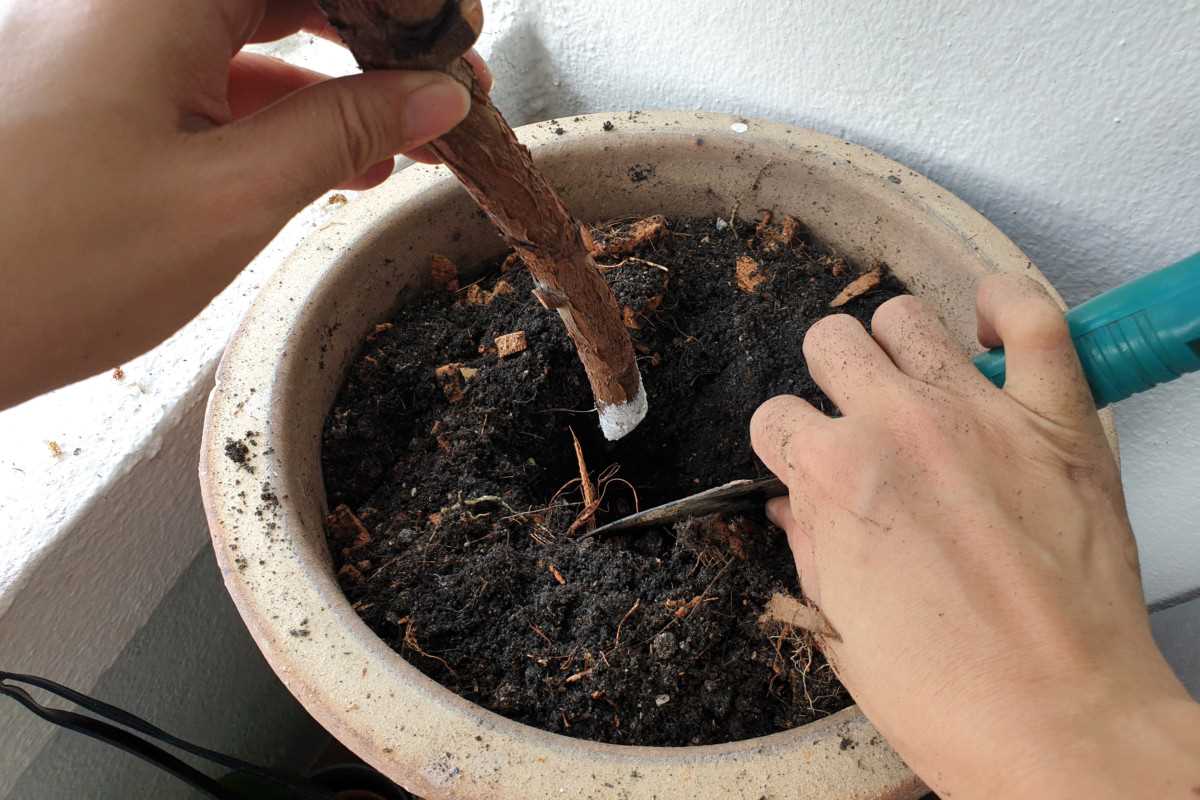
One of the key factors in boosting the rooting ability of cuttings is providing adequate humidity and moisture. The cuttings need a moist environment in order to develop roots successfully.
Here are two natural remedies to ensure optimal humidity and moisture:
- Misting: Regularly misting the cuttings with water helps to keep the leaves and surrounding air moist. This helps prevent excessive moisture loss through transpiration and facilitates the rooting process.
- Using a Humidity Dome: Placing the cuttings in a humidity dome or covering them loosely with a plastic bag helps create a microclimate with higher humidity. This trapped moisture promotes root development and prevents the cuttings from drying out.
In addition to these remedies, it is important to maintain a suitable moisture level in the rooting medium. The medium should be neither too wet nor too dry. Overwatering can lead to rotting of the cuttings, while underwatering can hinder root growth.
Monitoring the moisture level in the root zone and adjusting watering accordingly is essential for successful rooting. Using a well-draining rooting medium that retains moisture while allowing excess water to drain is recommended.
By providing adequate humidity and moisture, you can greatly enhance the rooting ability of cuttings without relying on chemicals or artificial methods.
Optimal Temperature and Light Conditions
The rooting ability of cuttings is greatly influenced by the temperature and light conditions they are exposed to. Providing optimal conditions can improve the success rate of rooting and enhance the overall growth of the plants.
Temperature
Rooting cuttings prefer a certain temperature range that promotes root development. Generally, a temperature between 65°F and 75°F (18°C to 24°C) is considered optimal for most plant species. Temperatures lower or higher than this range can negatively affect rooting success.
It is important to maintain a consistent temperature throughout the rooting process. Fluctuations in temperature can stress the cuttings and hinder root development. Using a thermostat-controlled environment or a heated propagation mat can help maintain a stable temperature for the cuttings.
Light
Light plays a crucial role in the rooting process as it provides the energy needed for photosynthesis and promotes the production of compounds necessary for root formation. While different species have varying light requirements, most cuttings benefit from bright but indirect light.
Avoid placing cuttings in direct sunlight, as it can lead to excessive heat and water loss. Instead, provide diffuse light by placing the cuttings near a window with a sheer curtain or using fluorescent grow lights. This will ensure the cuttings receive an adequate amount of light without being exposed to direct sunlight.
It is important to provide a consistent light source throughout the day. Keeping the cuttings in complete darkness or constant light can disrupt their hormone balance and negatively impact root development. Therefore, it is recommended to provide 12-16 hours of light per day, mimicking natural day and night cycles.
Conclusion
By maintaining optimal temperature and light conditions, you can greatly enhance the rooting ability of cuttings. Temperature between 65°F and 75°F (18°C to 24°C) and bright but indirect light are recommended for most plants. Remember to provide a consistent temperature and light source throughout the rooting process to ensure successful root development.
Regular Nutrient Supply
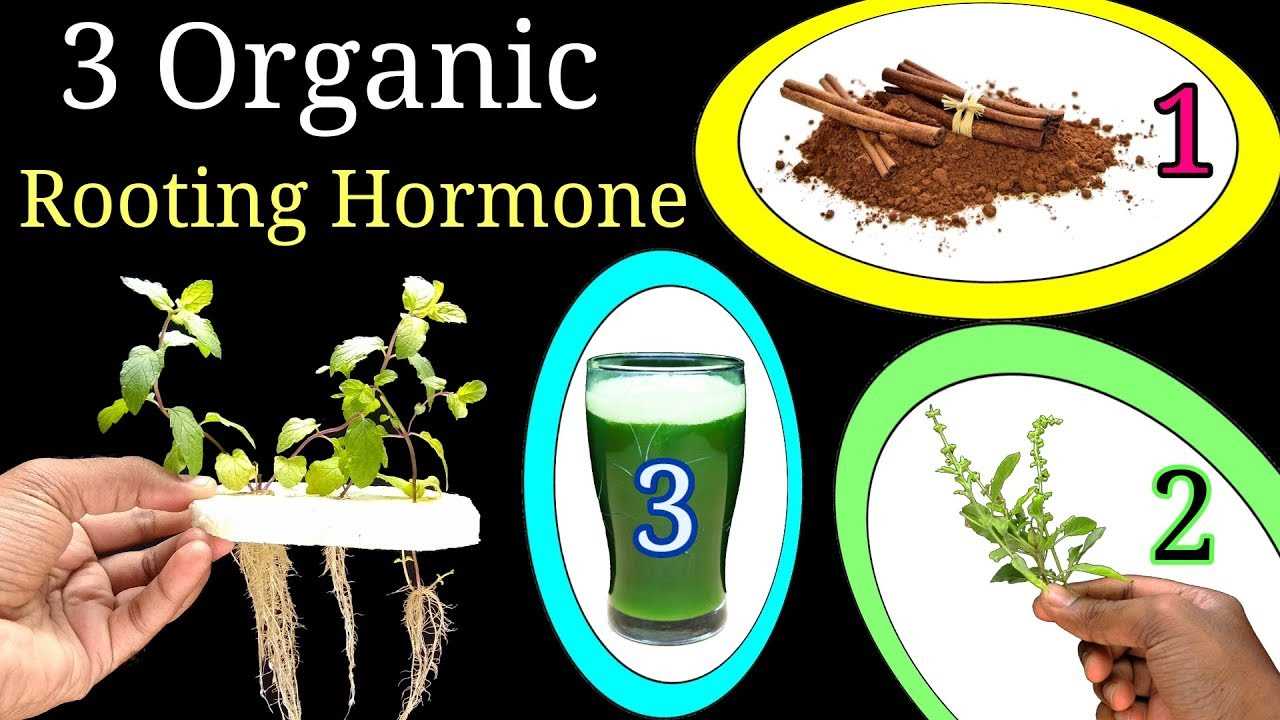
To enhance the rooting ability of cuttings, it is important to provide a regular supply of nutrients to support their growth and development. Adequate nutrient levels not only promote overall plant health, but also help in the formation of strong and robust roots.
There are several ways to ensure a regular nutrient supply for cuttings:
- Using a balanced fertilizer: Choose a fertilizer that provides a good balance of essential nutrients, such as nitrogen, phosphorus, and potassium. Follow the recommended dosage provided on the fertilizer package.
- Applying foliar feeding: Spray a liquid fertilizer directly onto the leaves of the cuttings. This method allows for the quick absorption of nutrients through the leaves, bypassing the root system.
- Using compost or organic matter: Incorporate well-rotted compost or organic matter into the growing medium. These natural sources of nutrients release their content slowly, providing a continuous supply of nourishment to the cuttings.
- Adjusting pH levels: Some nutrients are more readily available to plants within specific pH ranges. Test the pH of the growing medium and adjust it if necessary to optimize nutrient uptake.
- Providing regular watering: Water the cuttings regularly to prevent drought stress and maintain optimal nutrient uptake.
By ensuring a regular nutrient supply, you can significantly enhance the rooting ability of cuttings and increase their chances of successful establishment and growth.
Careful Handling and Protection
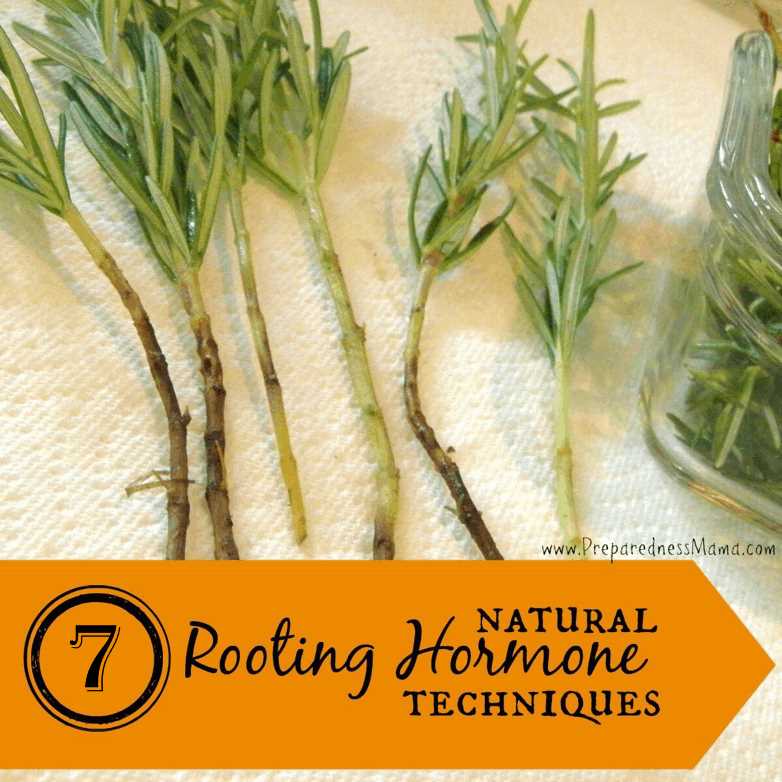
In order to boost the rooting ability of cuttings without the use of chemicals, it is important to handle the cuttings with care and provide them with proper protection. By following these guidelines, you can increase the chances of successful rooting and the overall health of the cuttings:
1. Select Healthy Cuttings
Choose healthy cuttings from disease-free plants. Look for cuttings that have a strong, well-developed stem and healthy leaves. Avoid cuttings that appear wilted, have discoloration, or show signs of pest damage.
2. Use Clean, Sharp Tools
When taking cuttings, ensure that your tools are clean and sharp. This helps prevent the spread of diseases and allows for clean cuts that are more likely to root successfully. Sterilize your cutting tools by wiping them with rubbing alcohol or a solution of bleach and water before and after use.
3. Apply Rooting Hormone, If Desired
While this article focuses on natural remedies without chemicals, using a rooting hormone can help improve the rooting success rates of certain plant species. If you choose to use a rooting hormone, dip the cut end of the cutting into the hormone powder or gel before planting it.
4. Provide Proper Environmental Conditions
Place the cuttings in an environment with the proper conditions for rooting. This typically involves providing ample humidity, warmth, and bright, indirect light. You can create a mini greenhouse effect by covering the cuttings with a clear plastic bag or using a propagation tray with a clear plastic lid.
5. Keep Cuttings Moist
Ensure that the cuttings remain moist but not soggy during the rooting process. This can be achieved by misting the cuttings regularly or creating a humid environment using a misting system or by placing the cuttings in a tray filled with moistened vermiculite or peat moss.
6. Protect the Cuttings
Protect the cuttings from extreme temperatures, direct sunlight, and strong winds that can cause stress or drying out. Keep the cuttings in a sheltered area or provide shade using a shade cloth or by placing them under a tree or other shade-providing structure.
By carefully handling the cuttings and providing them with the necessary protection, you can greatly increase their chances of successful rooting without the use of chemicals. Remember to monitor the progress of the cuttings regularly and make any necessary adjustments to the environment or care as needed.
Question-answer:
Can you explain what rooting ability is?
Rooting ability refers to a plant’s ability to grow new roots from cuttings. It is an important characteristic for propagation, as it determines whether or not a cutting will successfully develop into a new plant.
Are there any natural remedies that can boost the rooting ability of cuttings?
Yes, there are natural remedies that can enhance the rooting ability of cuttings. These remedies provide the necessary nutrients and hormones to stimulate root growth without the use of chemicals.
What are the two natural remedies mentioned in the article?
The two natural remedies mentioned in the article are willow water and honey. Willow water is made by soaking willow tree cuttings in water, while honey is used as a rooting hormone to stimulate root growth.
How does willow water improve the rooting ability of cuttings?
Willow water contains natural rooting hormones, such as indolebutyric acid (IBA), that encourage root growth. When cuttings are soaked in willow water, they absorb these hormones and are more likely to develop roots.
Is honey effective in boosting the rooting ability of cuttings?
Yes, honey can be effective in boosting the rooting ability of cuttings. It contains enzymes and natural sugars that promote root formation. Applying honey to the cut end of a cutting can enhance its chances of successfully developing roots.
Are there any other natural alternatives to boost rooting ability?
Yes, aside from willow water and honey, there are other natural alternatives that can improve the rooting ability of cuttings. These include aloe vera gel, cinnamon powder, and apple cider vinegar, all of which have been found to stimulate root growth.
Can these natural remedies be used for all types of plants?
While these natural remedies can be effective for many types of plants, it is important to note that not all plants will respond equally to them. Some species may require specific nutrients or environmental conditions for successful rooting. It is best to research the specific needs of the plant you are propagating before using any natural remedies.







